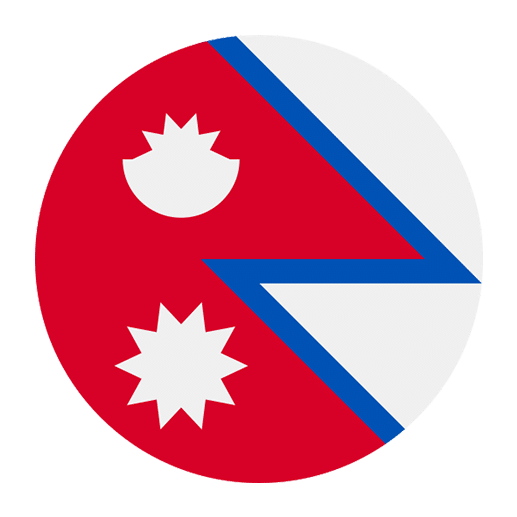Nepali, the official language of Nepal, is a beautiful and rich language with a unique structure and grammar. Understanding its noun system is essential for mastering the language. In this article, we will delve into the basics and classification of Nepali nouns, offering a comprehensive guide to help English speakers grasp the fundamental aspects of Nepali grammar.
The Basics of Nepali Nouns
Nouns in Nepali, like in English, are words used to identify people, places, things, or ideas. They play a pivotal role in sentence construction and convey significant meaning. However, Nepali nouns exhibit unique characteristics that distinguish them from their English counterparts.
1. Gender
Nepali nouns are categorized based on gender, which is a crucial aspect of the language. There are two primary genders in Nepali:
– Masculine (पुलिङ्ग)
– Feminine (स्त्रीलिङ्ग)
For instance:
– Masculine: केटा (keta) – boy
– Feminine: केटी (keti) – girl
The gender of nouns affects other parts of speech, such as adjectives and verbs, and is essential for correct sentence formation.
2. Number
Nepali nouns also change form based on number, indicating whether they are singular or plural. Singular nouns refer to one entity, while plural nouns refer to more than one. Pluralization in Nepali often involves adding specific suffixes to the singular form.
For instance:
– Singular: किताब (kitab) – book
– Plural: किताबहरू (kitabharu) – books
3. Case
Case in Nepali determines the noun’s role within a sentence. There are several cases in Nepali, including:
– Nominative (कर्तृ कारक) – the subject of the sentence
– Accusative (कर्म कारक) – the direct object
– Instrumental (करण कारक) – the means by which an action is performed
– Dative (सम्प्रदान कारक) – the indirect object or recipient
– Ablative (अपादान कारक) – the point of origin or separation
– Genitive (सम्बन्ध कारक) – possession or relation
– Locative (अधिकरण कारक) – location or place
Understanding these cases is essential for constructing meaningful and grammatically correct sentences in Nepali.
Classification of Nepali Nouns
Nepali nouns can be classified into several categories based on various criteria. Let’s explore these classifications in detail.
1. Common and Proper Nouns
Common Nouns (सामान्य संज्ञा)
Common nouns refer to general names of people, places, things, or ideas. They are not specific and can refer to any member of a group.
For example:
– मानिस (manis) – person
– शहर (sahar) – city
– किताब (kitab) – book
Proper Nouns (व्यक्तिवाचक संज्ञा)
Proper nouns are specific names of particular people, places, or entities. They are always capitalized in English but not necessarily in Nepali script.
For example:
– राम (Ram) – a specific person’s name
– काठमाडौँ (Kathmandu) – the capital city of Nepal
– एभरेस्ट (Everest) – a specific mountain
2. Concrete and Abstract Nouns
Concrete Nouns (व्यक्तिवाचक संज्ञा)
Concrete nouns refer to tangible objects that can be perceived through the five senses.
For example:
– घर (ghar) – house
– कुकुर (kukur) – dog
– फूल (phool) – flower
Abstract Nouns (भाववाचक संज्ञा)
Abstract nouns refer to intangible concepts, ideas, or feelings that cannot be perceived through the senses.
For example:
– प्रेम (prem) – love
– खुशी (khushi) – happiness
– ज्ञान (gyan) – knowledge
3. Countable and Uncountable Nouns
Countable Nouns (गणनीय संज्ञा)
Countable nouns are those that can be quantified or counted. They have both singular and plural forms.
For example:
– स्याउ (syaau) – apple
– किताब (kitab) – book
– बच्चा (bachha) – child
Uncountable Nouns (अगणनीय संज्ञा)
Uncountable nouns refer to substances, concepts, or masses that cannot be counted individually. They do not have a plural form and are treated as singular.
For example:
– पानी (pani) – water
– दूध (dudh) – milk
– बालुवा (baluwa) – sand
4. Animate and Inanimate Nouns
Animate Nouns (सजीव संज्ञा)
Animate nouns refer to living beings, such as humans, animals, and plants.
For example:
– मानिस (manis) – person
– बिरालो (biralo) – cat
– बिरुवा (biruwa) – plant
Inanimate Nouns (निर्जीव संज्ञा)
Inanimate nouns refer to non-living objects or entities.
For example:
– मेच (mech) – chair
– पुस्तकालय (pustakalaya) – library
– कार (kar) – car
5. Collective Nouns
Collective nouns refer to a group or collection of individuals or things considered as a single unit.
For example:
– टोली (toli) – team
– वर्ग (varg) – class
– झुण्ड (jhund) – flock
Formation of Nepali Nouns
Nepali nouns can be formed in various ways, including through derivation and composition.
1. Derivation
Derivation involves creating new nouns by adding prefixes, suffixes, or infixes to existing words. This process can change the meaning of the original word.
For example:
– Adding the suffix “-पन” (-pan) to the adjective “सुन्दर” (sundar) – beautiful, forms the noun “सुन्दरता” (sundarta) – beauty.
– Adding the prefix “अ” (a-) to the noun “सत्य” (satya) – truth, forms the noun “असत्य” (asatya) – falsehood.
2. Composition
Composition involves combining two or more words to form a compound noun. The meaning of the compound noun may differ from the meanings of the individual words.
For example:
– “विद्यालय” (vidyalaya) is composed of “विद्या” (vidya) – knowledge and “आलय” (alaya) – place, meaning school.
– “पुस्तकालय” (pustakalaya) is composed of “पुस्तक” (pustak) – book and “आलय” (alaya) – place, meaning library.
Case Markers and Postpositions
Nepali uses case markers and postpositions to indicate the grammatical case of nouns. These markers are attached to the noun to show its relationship to other words in the sentence.
1. Nominative Case (कर्तृ कारक)
The nominative case is usually the subject of the sentence. In Nepali, the subject is often unmarked.
For example:
– राम खाना खान्छ। (Ram khana khanchha.) – Ram eats food.
2. Accusative Case (कर्म कारक)
The accusative case indicates the direct object of a verb. The marker for the accusative case is “लाई” (lai).
For example:
– म किताबलाई पढ्छु। (Ma kitab-lai padchhu.) – I read the book.
3. Instrumental Case (करण कारक)
The instrumental case denotes the means or instrument by which an action is performed. The marker for the instrumental case is “ले” (le).
For example:
– उसले कलमले लेख्यो। (Us-le kalam-le lekhyo.) – He wrote with a pen.
4. Dative Case (सम्प्रदान कारक)
The dative case indicates the indirect object or recipient of an action. The marker for the dative case is “लाई” (lai).
For example:
– उसले मलाई उपहार दियो। (Us-le ma-lai upahar diyo.) – He gave me a gift.
5. Ablative Case (अपादान कारक)
The ablative case denotes the point of origin or separation. The marker for the ablative case is “बाट” (bata).
For example:
– म घरबाट आएँ। (Ma ghar-bata aaye.) – I came from home.
6. Genitive Case (सम्बन्ध कारक)
The genitive case indicates possession or relationship. The marker for the genitive case is “को” (ko), “की” (ki), or “का” (ka), depending on the gender and number of the noun.
For example:
– रामको किताब (Ram-ko kitab) – Ram’s book
– सीताको घर (Sita-ko ghar) – Sita’s house
7. Locative Case (अधिकरण कारक)
The locative case indicates location or place. The marker for the locative case is “मा” (ma).
For example:
– म विद्यालयमा छु। (Ma vidyalaya-ma chhu.) – I am at school.
Conclusion
Understanding Nepali nouns, their classification, and their grammatical roles is fundamental for mastering the language. Nepali nouns, with their distinct gender, number, and case system, provide a rich linguistic structure that reflects the culture and traditions of Nepal. By grasping the basics and nuances of Nepali nouns, language learners can enhance their proficiency and appreciation of this beautiful language. Whether you are a beginner or an advanced learner, exploring the intricacies of Nepali nouns will undoubtedly enrich your linguistic journey.

